Abstract
Serological studies of passive immunity in experimentally induced bovine colibacillosis was studied in a 41-cow university herd. Pregnant dams were antigenized prepartum with two injections administered by the subcutaneous and intrammamary routes with one of four vaccine preparations (killed bacteria, live bacteria, culture supernatant, or heart infusion broth [control]). The data indicate that 77% of the neonates born to vaccinated dams were strongly protected against oral challenge with Escherichia coli strain B-44. Bacterial agglutinin and passive hemagglutination titers of colostral whey directly reflected the efficacy of the vaccines. A notable decrease in the whey titers to somatic and capsular antigens occurred after heat treatment at 56 C for 30 min. Complicity of heat-liable immune factor(s) in protection from scouring was suggested. The nature of the protective antigen is not clearly defined by these studies but there is some evidence that the K antigen may play a vital role in this regard.
Full text
PDF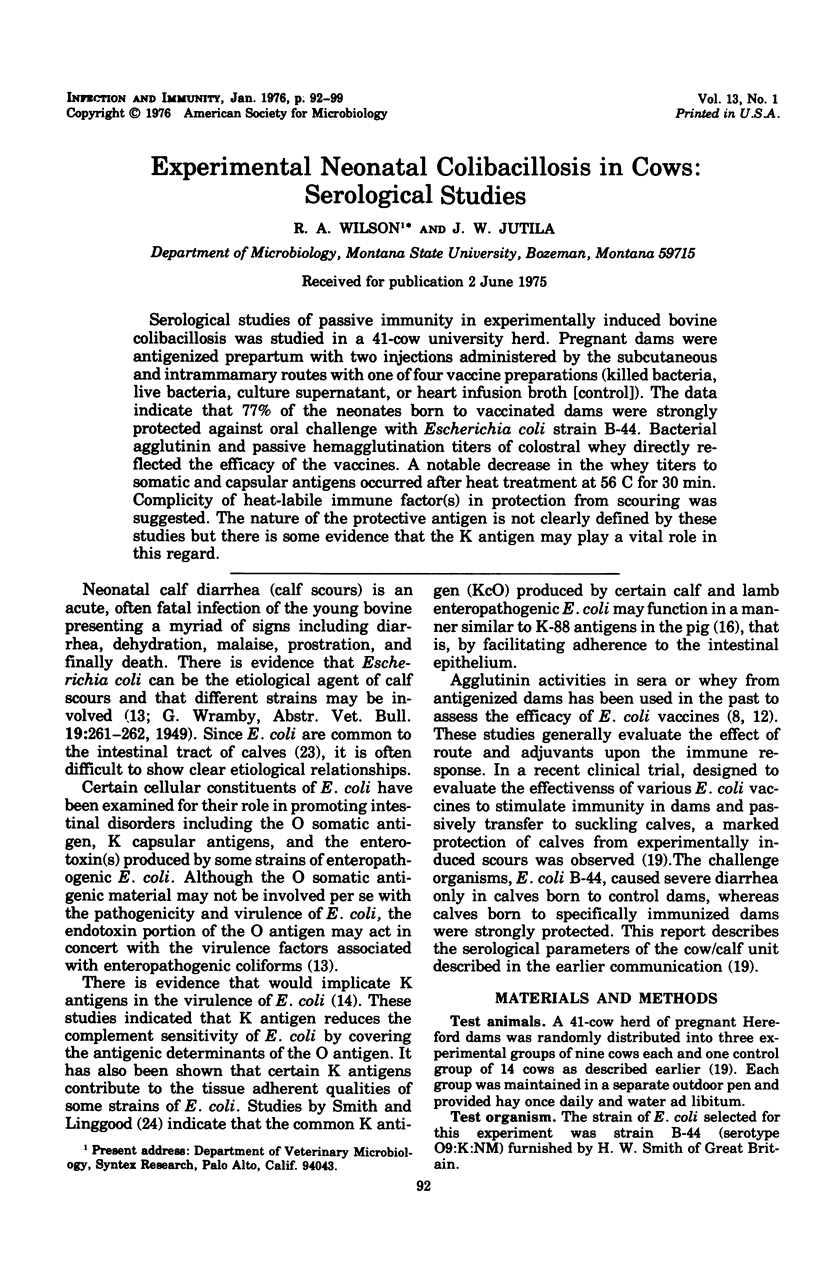
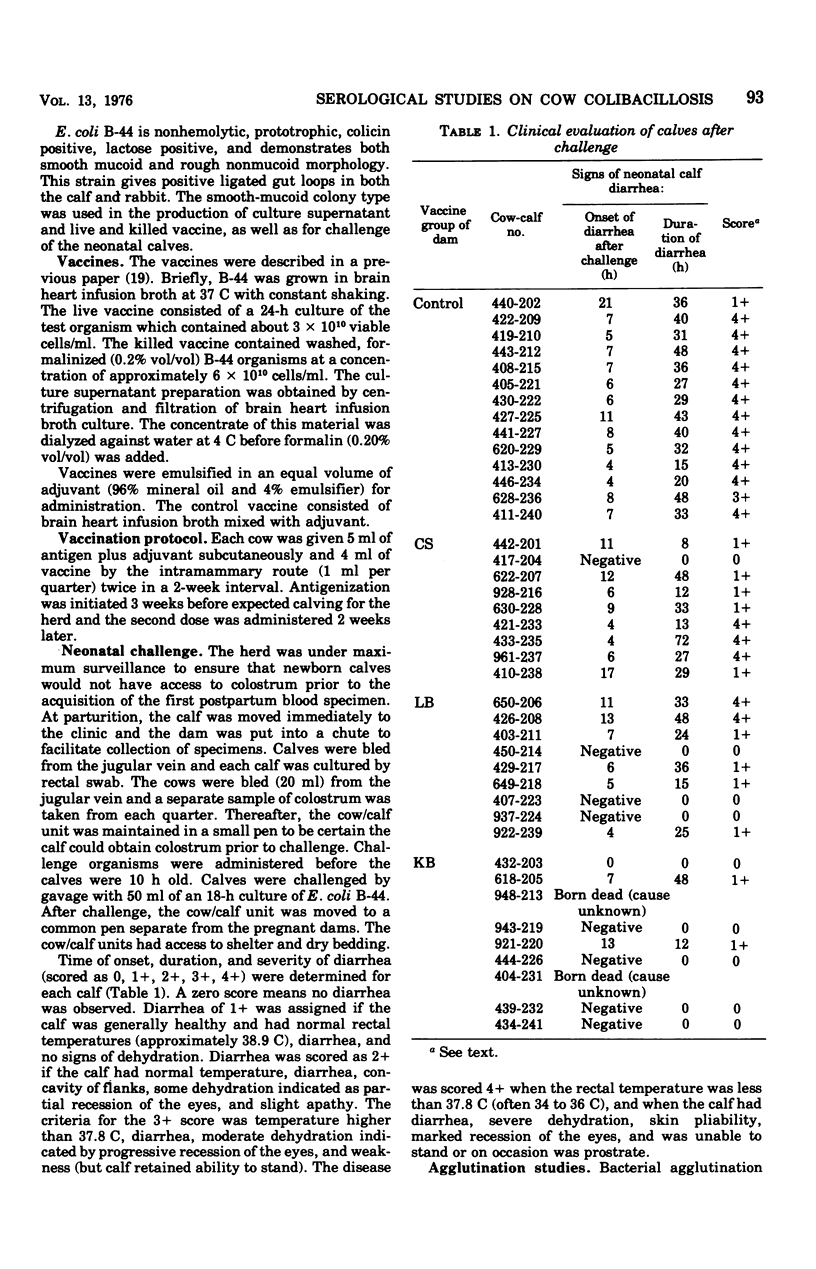
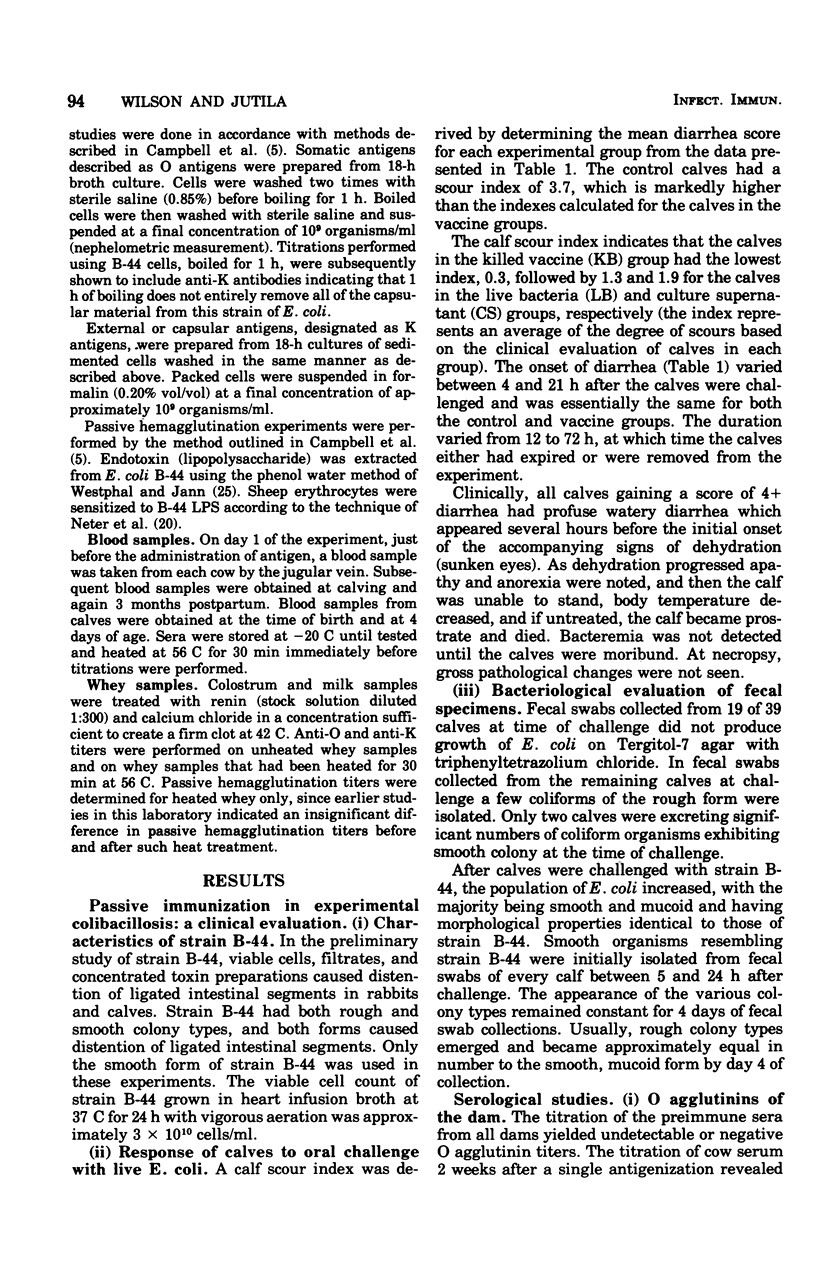
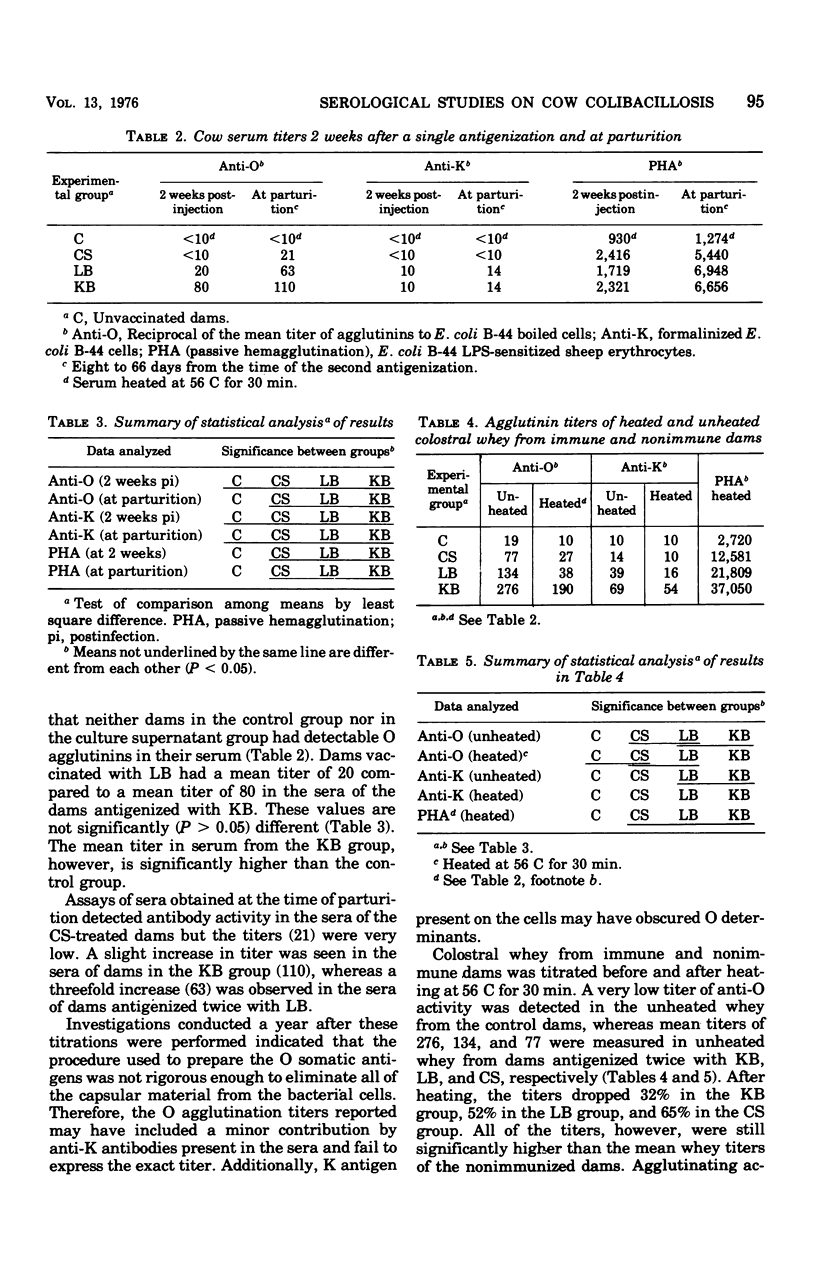
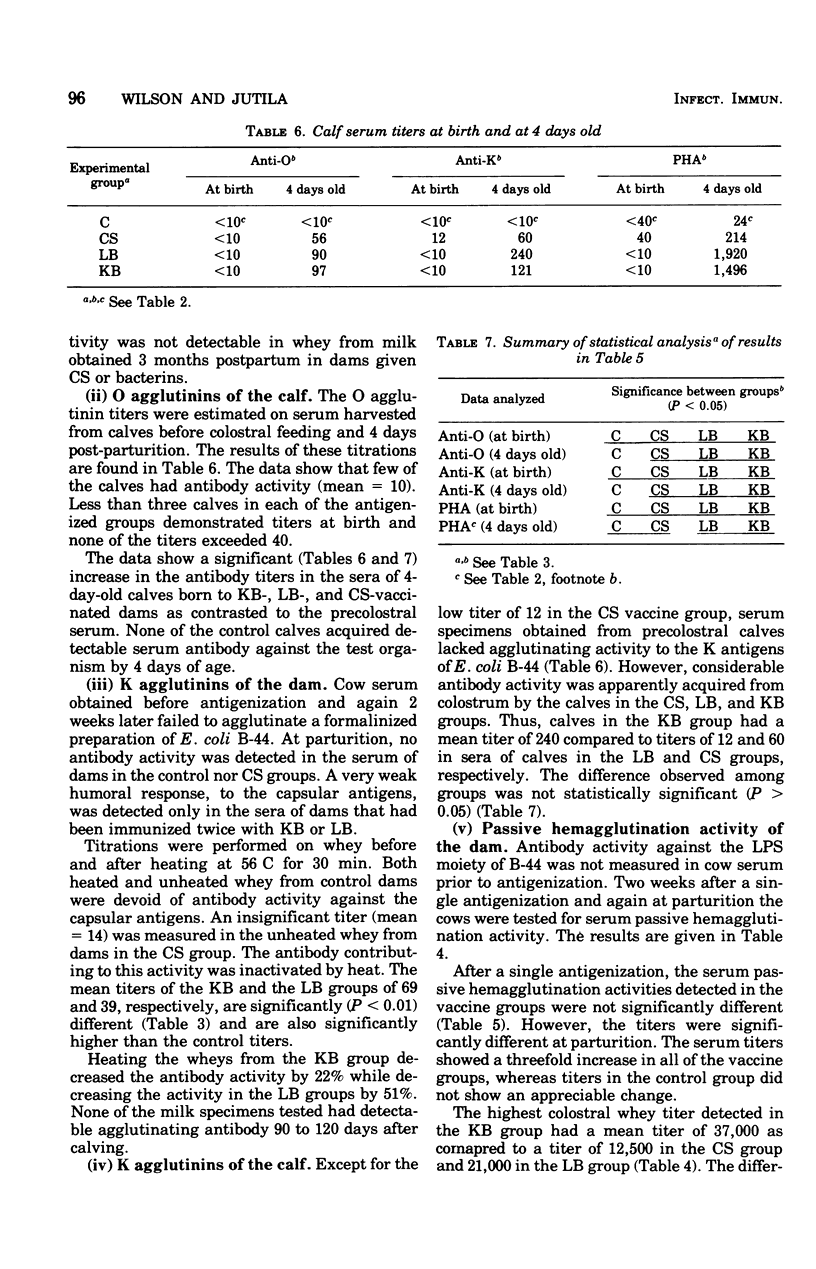
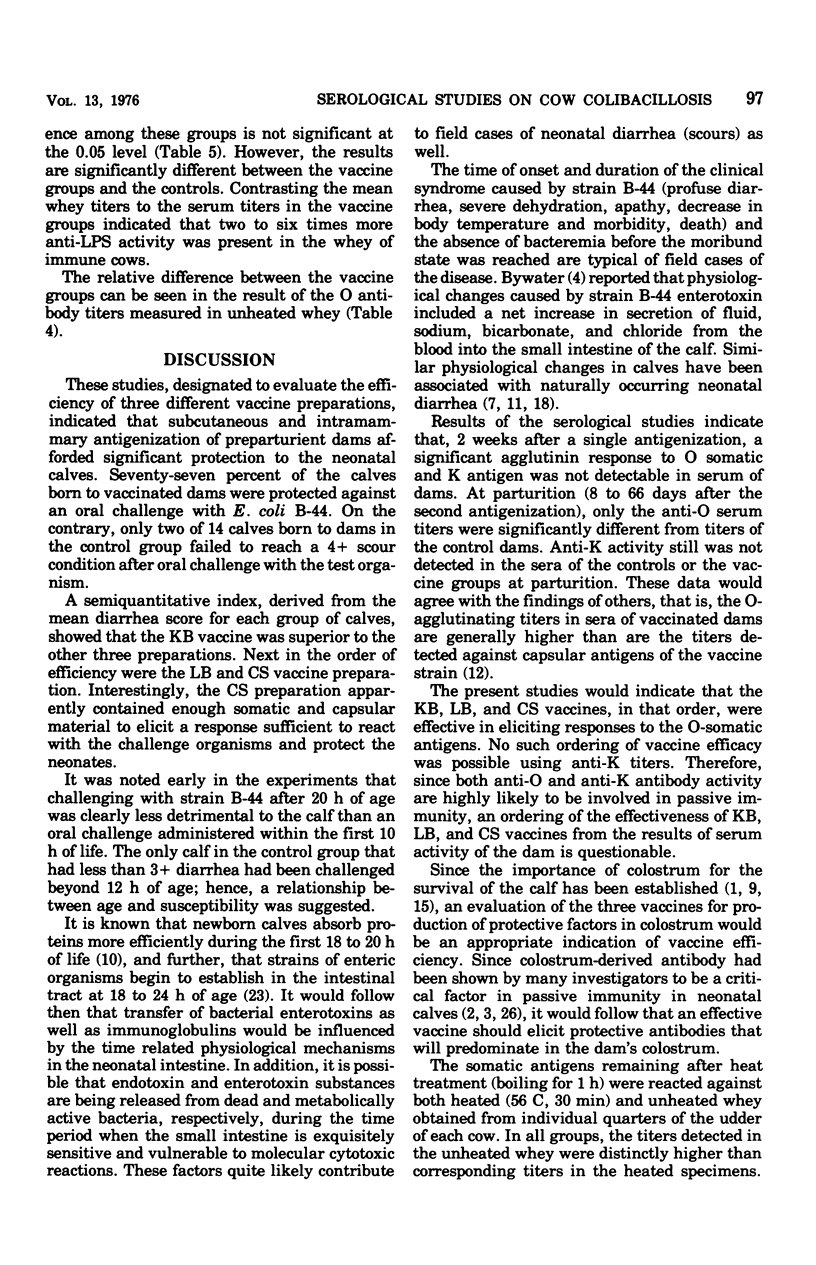
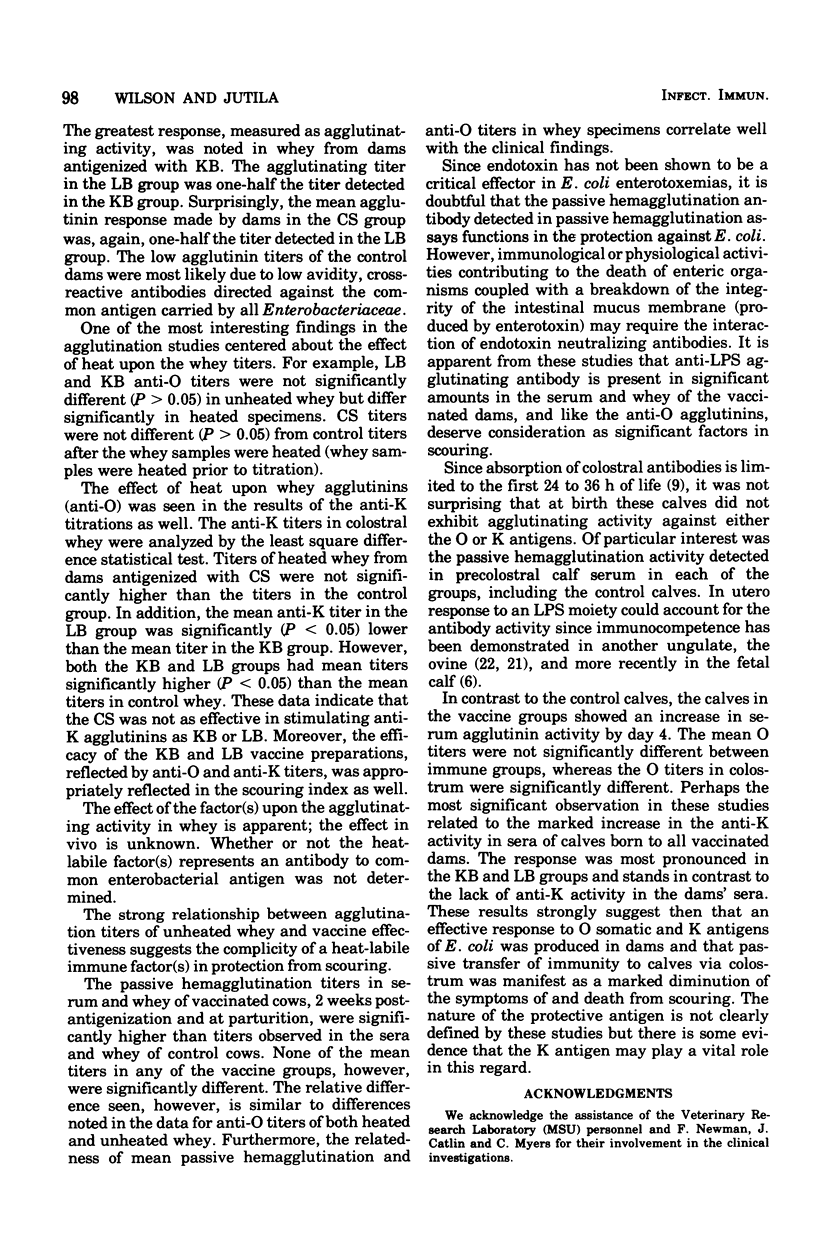
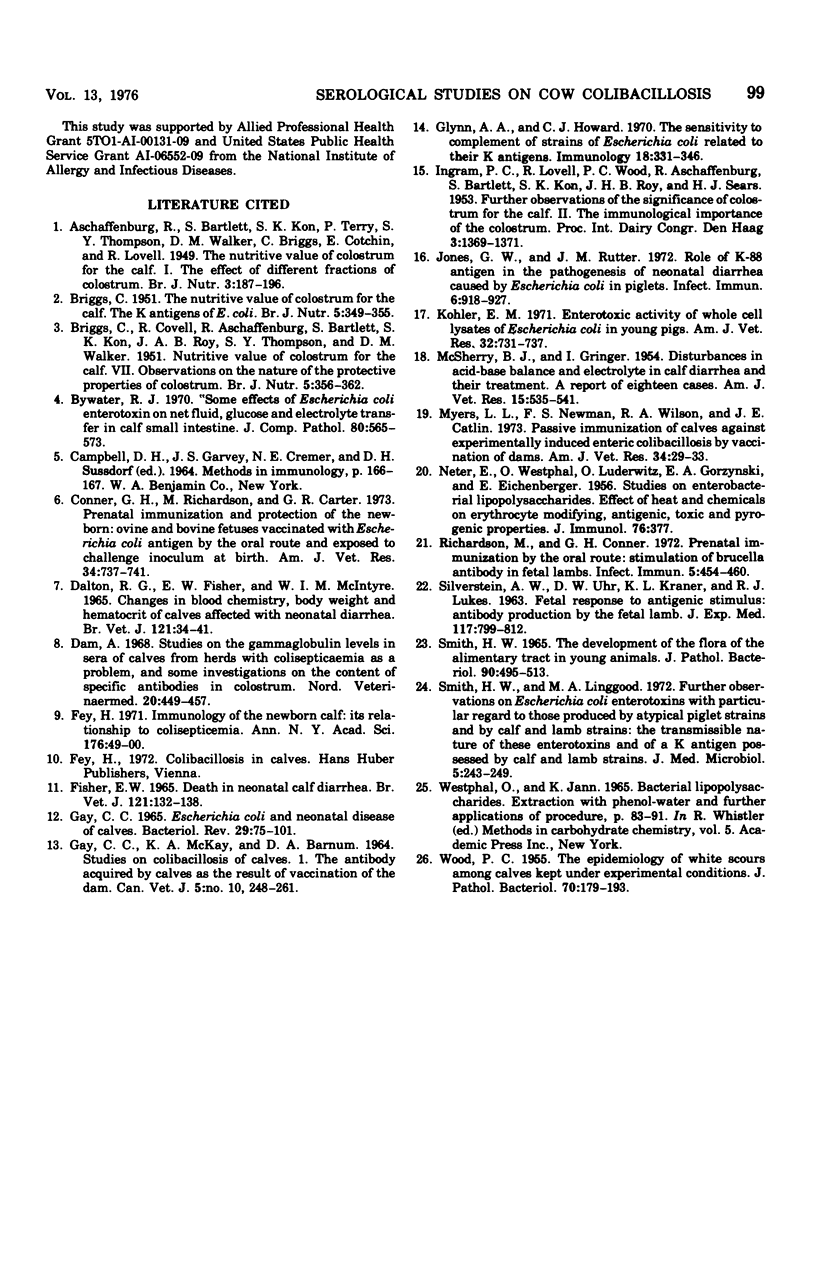
Selected References
These references are in PubMed. This may not be the complete list of references from this article.
- ASCHAFFENBURG R., BARTLETT S. The nutritive value of colostrum for the calf; the effect of different fractions of colostrum. Br J Nutr. 1949;3(2-3):187–196. doi: 10.1079/bjn19490026. [DOI] [PubMed] [Google Scholar]
- BRIGGS C., LOVELL R., ASCHAFFENBURG R., BARTLETT S., KON S. K., ROY J. H. B., THOMPSON S. Y., WALKER D. M. The nutritive value of colostrum for the calf. 7. Observations on the nature of the protective properties of colostrum. Br J Nutr. 1951;5(3-4):356–362. doi: 10.1079/bjn19510048. [DOI] [PubMed] [Google Scholar]
- BRIGGS C. The nutritive value of colostrum for the calf. 6. The 'K' antigens of Bacterium coli. Br J Nutr. 1951;5(3-4):349–355. doi: 10.1079/bjn19510047. [DOI] [PubMed] [Google Scholar]
- Bywater R. J. Some effects of Escherichia coli enterotoxin on net fluid, glucose and electrolyte transfer in calf small intestine. J Comp Pathol. 1970 Oct;80(4):565–573. doi: 10.1016/0021-9975(70)90054-x. [DOI] [PubMed] [Google Scholar]
- Conner G. H., Richardson M., Carter G. R. Prenatal immunization and protection of the newborn: ovine and bovine fetuses vaccinated with Escherichia coli antigen by the oral route and exposed to challenge inoculum at birth. Am J Vet Res. 1973 Jun;34(6):737–741. [PubMed] [Google Scholar]
- DALTON R. G., FISHER E. W., MCINTYRE W. I. CHANGES IN BLOOD CHEMISTRY, BODY WEIGHT AND HAEMOTOCRIT OF CALVES AFFECTED WITH NEONATAL DIARRHOEA. Br Vet J. 1965 Jan;121:34–42. doi: 10.1016/s0007-1935(17)41405-9. [DOI] [PubMed] [Google Scholar]
- FISHER E. W. DEATH IN NEONATAL CALF DIARRHOEA. Br Vet J. 1965 Mar;121:132–138. doi: 10.1016/s0007-1935(17)41304-2. [DOI] [PubMed] [Google Scholar]
- GAY C. C. ESCHERICHIA COLI AND NEONATAL DISEASE OF CALVES. Bacteriol Rev. 1965 Mar;29:75–101. doi: 10.1128/br.29.1.75-101.1965. [DOI] [PMC free article] [PubMed] [Google Scholar]
- Gay C. C., McKay K. A., Barnum D. A. Studies on Colibacillosis of Calves. I. The Antibody Acquired by Calves as the Result of Vaccination of the Dam. Can Vet J. 1964 Oct;5(10):248–261. [PMC free article] [PubMed] [Google Scholar]
- Glynn A. A., Howard C. J. The sensitivity to complement of strains of Escherichia coli related to their K antigens. Immunology. 1970 Mar;18(3):331–346. [PMC free article] [PubMed] [Google Scholar]
- Jones G. W., Rutter J. M. Role of the K88 antigen in the pathogenesis of neonatal diarrhea caused by Escherichia coli in piglets. Infect Immun. 1972 Dec;6(6):918–927. doi: 10.1128/iai.6.6.918-927.1972. [DOI] [PMC free article] [PubMed] [Google Scholar]
- Kohler E. M. Enterotoxic activity of whole cell lysates of Escherichia coli in young pigs. Am J Vet Res. 1971 May;32(5):731–737. [PubMed] [Google Scholar]
- McSHERRY B. J., GRINYER I. Disturbances in acid-base balance and electrolyte in calf diarrhea and their treatment; a report of eighteen cases. Am J Vet Res. 1954 Oct;15(57):535–541. [PubMed] [Google Scholar]
- Myers L. L., Newman F. S., Wilson R. A., Catlin J. E. Passive immunization of calves against experimentally induced enteric colibacillosis by vaccination of dams. Am J Vet Res. 1973 Jan;34(1):29–33. [PubMed] [Google Scholar]
- NETER E., WESTPHAL O., LUDERITZ O., GORZYNSKI E. A., EICHENBERGER E. Studies of enterobacterial lipopolysaccharides; effects of heat and chemicals on erythrocyte-modifying, antigenic, toxic and pyrogenic properties. J Immunol. 1956 May;76(5):377–385. [PubMed] [Google Scholar]
- Richardson M., Conner G. H. Prenatal immunization by the oral route: stimulation of Brucella antibody in fetal lambs. Infect Immun. 1972 Apr;5(4):454–460. doi: 10.1128/iai.5.4.454-460.1972. [DOI] [PMC free article] [PubMed] [Google Scholar]
- SILVERSTEIN A. M., UHR J. W., KRANER K. L., LUKES R. J. Fetal response to antigenic stimulus. II. Antibody production by the fetal lamb. J Exp Med. 1963 May 1;117:799–812. doi: 10.1084/jem.117.5.799. [DOI] [PMC free article] [PubMed] [Google Scholar]
- Smith H. W., Linggood M. A. Further observations on Escherichia coli enterotoxins with particular regard to those produced by atypical piglet strains and by calf and lamb strains: the transmissible nature of these enterotoxins and of a K antigen possessed by calf and lamb strains. J Med Microbiol. 1972 May;5(2):243–250. doi: 10.1099/00222615-5-2-243. [DOI] [PubMed] [Google Scholar]
- Smith H. W. The development of the flora of the alimentary tract in young animals. J Pathol Bacteriol. 1965 Oct;90(2):495–513. [PubMed] [Google Scholar]
- WOOD P. C. The epidemiology of white scours among calves kept under experimental conditions. J Pathol Bacteriol. 1955 Jul;70(1):179–193. doi: 10.1002/path.1700700116. [DOI] [PubMed] [Google Scholar]


